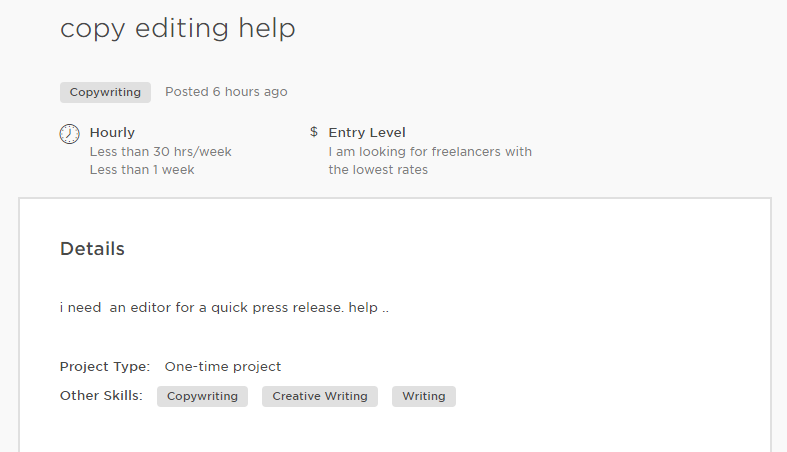Getting the right talent to apply to your company is the first step to hiring top talent. It’s arguably the most important step. Here’s how to get awesome applicants who are as excited about your job posting as you are.
First, let’s take a look at examples of an engaging job listing and a dull one. Compare the two, paying attention to language, details, and what the postings say. What are some things that make one more interesting than the other?
Here’s an example of a fairly dull job posting:

Here’s an example of an exciting job posting:

As you may have noticed, there’s a big difference between an engaging job posting and a dull one. One makes skilled candidates excited for a job, and the other will only get applicants who are after the money.
Here are the elements of a good job posting. Be sure to incorporate them in order to get candidates excited to apply.
Headline
The headline of your job posting is what attracts candidates in the first place. Make sure to make this enticing, much like you need to make blog post titles click-worthy.
Include the job title and a few key details. For example; “[Company] Content Marketer needed to handle blogs, social, and guest postings.”
If your job posting has the option of showing a few more details, you can keep your headline simple (just the job title), and move the rest to the details section. For example; “Content Marketer – Will handle blogs, social media, and guest posting opportunities.”
Description
An introduction to the job and company is vital for building company culture, but many job postings omit this. Be sure to introduce your company and describe your ideal candidate in terms of culture, beliefs, traits, and other non-qualification traits. Use your brand’s unique voice and tone in order to convey your brand personality.
Qualifications and requirements
Here’s where you describe the must-haves and nice-to-haves for your candidate. It’s where they can qualify or disqualify themselves, saving your HR valuable time sifting through applications.
That means you need to be sure to detail exactly what is a must (ie. perfect grammar for a copywriter, programming language fluency for a developer, etc.).
Then, add in skills that are beneficial to have for the job, but not necessarily vital. These can include skills that can be learned on-the-job. For example, a research analyst must have a good understanding of the data that drives businesses, but they don’t necessarily need to know how Google Analytics works since that can be taught on the job.
What’s in it for them?
Don’t forget to explain what’s in it for the candidates. A job posting shouldn’t be all demands and no benefits. Attract your best candidates by explaining how they’ll benefit from working with your company. This doesn’t have to all be about the salary, it could include skills that they will learn and practice, company trips, and mentoring opportunities.
Ease of application
Even if your job description is attractive, if you don’t make it simple for candidates to apply, your application rates will fall off. Don’t ask your candidates to enter their resume manually, or have them create an account that takes them 30 minutes to finish.
Make it quick and easy to apply by giving them an option to upload their resume, fill in a quick cover letter, and capture key information (ie. email address, name, availability), but not the non-essentials (address, SAT scores, etc.).




